Space

The music-recording industry has been under pressure lately, as it struggles to adapt to the age of the internet. This is the second major structural revolution to challenge the recording industry in the past few decades, the first being when video killed the radio star. Music videos surged in popularity (and budget) in the '90s, but during the '00s (pronounced "uh-ohs") music video budgets seemed to have plateaued and begun to decline. In fact, just 3 of the 20 most expensive (inflation-adjusted) music videos of all time were produced after 2000. The most expensive of…
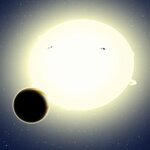
Detecting alien worlds is a significant challenge since they are small, faint, and close to their stars. The two most prolific techniques for finding exoplanets are radial velocity (looking for wobbling stars) and transits (looking for dimming stars).
A team at Tel Aviv University and the Harvard-Smithsonian Center for Astrophysics (CfA) has just discovered an exoplanet and the planet they found, Kepler-76b, was identified by the BEER algorithm; an acronym for relativistic BEaming, Ellipsoidal, and Reflection/emission modulations. BEER was developed by Professor Tsevi Mazeh and his…
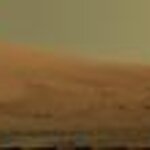
A roughly 3.5-mile high Martian mound known as Mount Sharp is not evidence of a massive lake but might be the result of the Red Planet's famously dusty atmosphere, a new analysis has found. If correct, the research dilutes expectations that the mound holds evidence of a large body of water and ideas about past habitability.
The researchers, based at Princeton University and the California Institute of Technology, suggest that Mount Sharp most likely emerged as strong winds carried dust and sand into the 96-mile-wide crater in which the mound sits. They report that that air likely…

We all know time is relative, just like we know that the plates are moving around underneath us, but both time and that the earth is not moving still 'ground' us on a daily basis.
On Saturn, that can all be a little confusing. Unlike Earth, which has a visible rocky surface and rotates once every 24 hours, Saturn is composed mostly of clouds and liquid gas layers, each rotating about the planet at its own rate of speed. This variation in rotation made it difficult for scientists to pin down time for the planet. And Saturn's magnetosphere is the third largest structure in the solar…
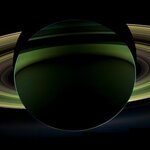
As planets age the general rule is that they become darker and cooler - but Saturn is an exception. Why it looks so young for its age has been a space science topic since the late 1960s but a paper in Nature Geoscience says it has some answers.
Saturn is known to all by its distinctive rings but less well known is that it is one of the largest planets in our Solar System, second only in size to massive Jupiter. It is primarily made of hydrogen and helium and its excessive brightness has previously been attributed to helium rains, the result of helium failing to mix with Saturn's hydrogen rich…

Friends! This is a desperate cry for help. No, I don't think that the famous Fermi paradox is the actual coverup. But the certain chain of events would definitely bring this idea to any unbiased mind. See it for yourself and may be you can help to resolve this new paradox regarding the alien life on our home planet.In 1990 our research group made a report [1] at the Annual Tsiolkovski Conference where was announced in plain words that we could be literally surrounded by alien civilizations from which we were not able to get any information and with which we could not communicate.
The…
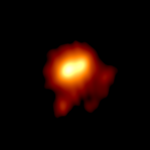
Betelgeuse is visible to nighttime viewers as the bright, red star on the shoulder of Orion the Hunter. The star itself is huge, 1,000 times larger than our Sun, but from 650 light years away it is a tiny dot in the sky even though it is one of the nearest red supergiants to Earth.
Getting into the details of the star and the region around it requires a combination of different telescopes and astronomers have released a new image of the outer atmosphere of Betelgeuse
taken by the e-MERLIN radio telescope array operated from the Jodrell Bank Observatory in Cheshire…

On March 24th, 1993, astronomers David Levy and Carolyn and Eugene M. Shoemaker discovered the first comet observed orbiting a planet rather than the Sun. Named Shoemaker-Levy 9 (SL9), it was found to be composed of 21 fragments. Soon after that, orbital studies showed that the comet had passed within Jupiter's Roche limit in July 1992. Inside this limit, the planet's tidal forces are strong enough to disintegrate a body held together by its own gravity, thus explaining SL9's fragmentation.
Studies showed that SL9's orbit would pass within Jupiter in July 1994 and that the…
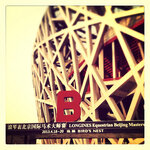
Horseback riding hasn't been my favourite activity. Not that I do not like horses, au contraire. I have also tried various kinds of horseback riding; like cowboys on the prairie in Texas and New Mexico; on Icelandic horses in Iceland and I did ride an equestrian horse or two too. But I was not able to perform any equestrianism on them, or act equestrian myself for that matter!
I am not kidding you. Equestrianism is an Olympic sport. In Beijing's Birds Nest, home to the 2008 Olympic games, there are still equestrian competitions - as you can tell from the photo.Credit: B L Bye
The ultimate…

The Kepler mission revealed the existence of potentially habitable planets slightly bigger than Earth.
The spacecraft
named for Johannes Kepler
was launched in 2009 and now it has found two new planetary systems, Kepler-62 and Kepler-69, about 1,200 light years from Earth that include three super-Earth-size planets in the "habitable zone," the range of distance from a star where the surface temperature of an orbiting planet might be suitable for liquid water.
The Kepler-62 system has five planets; 62b, 62c, 62d, 62e and 62f. The Kepler-69 system has two planets; 69b and 69c.…